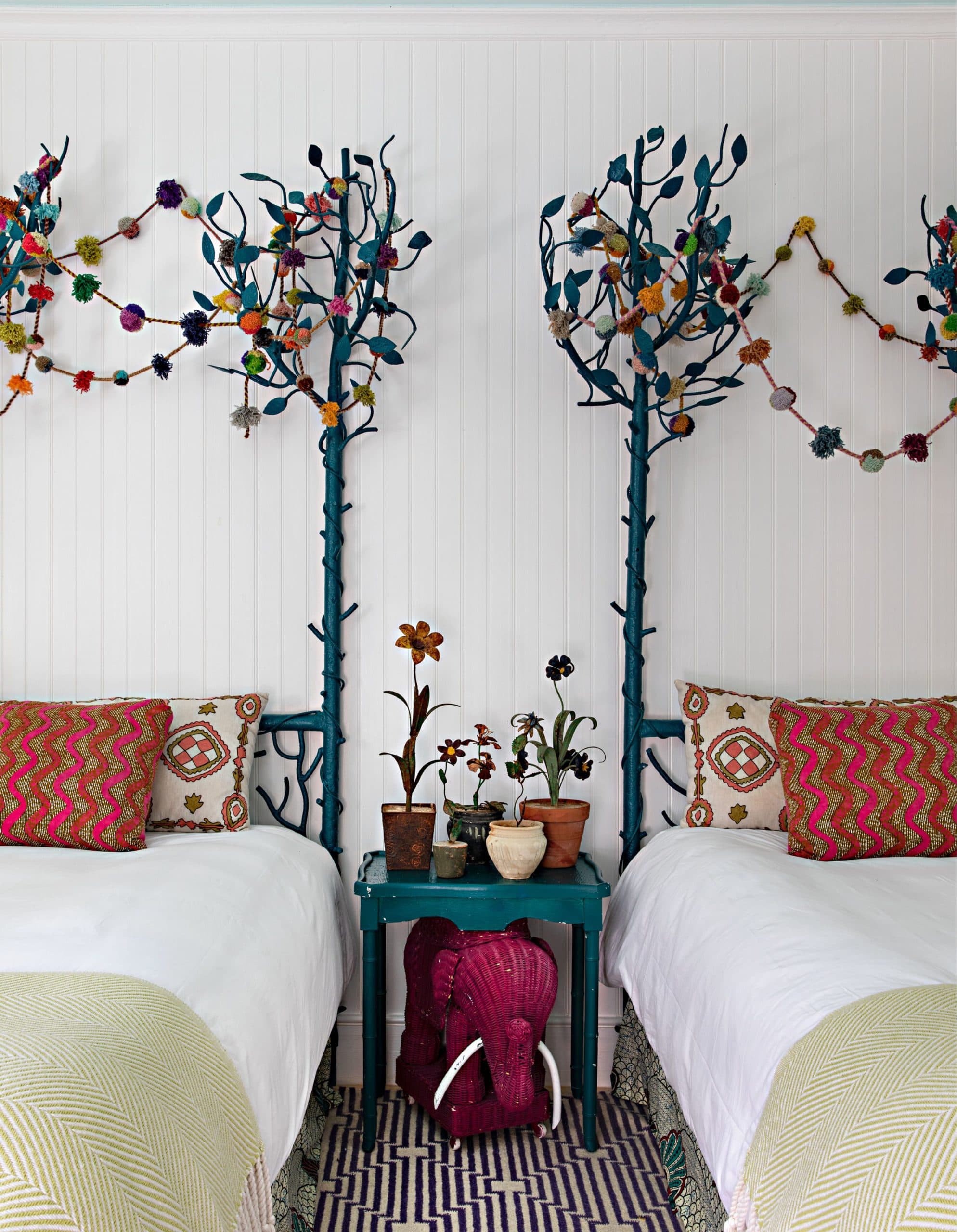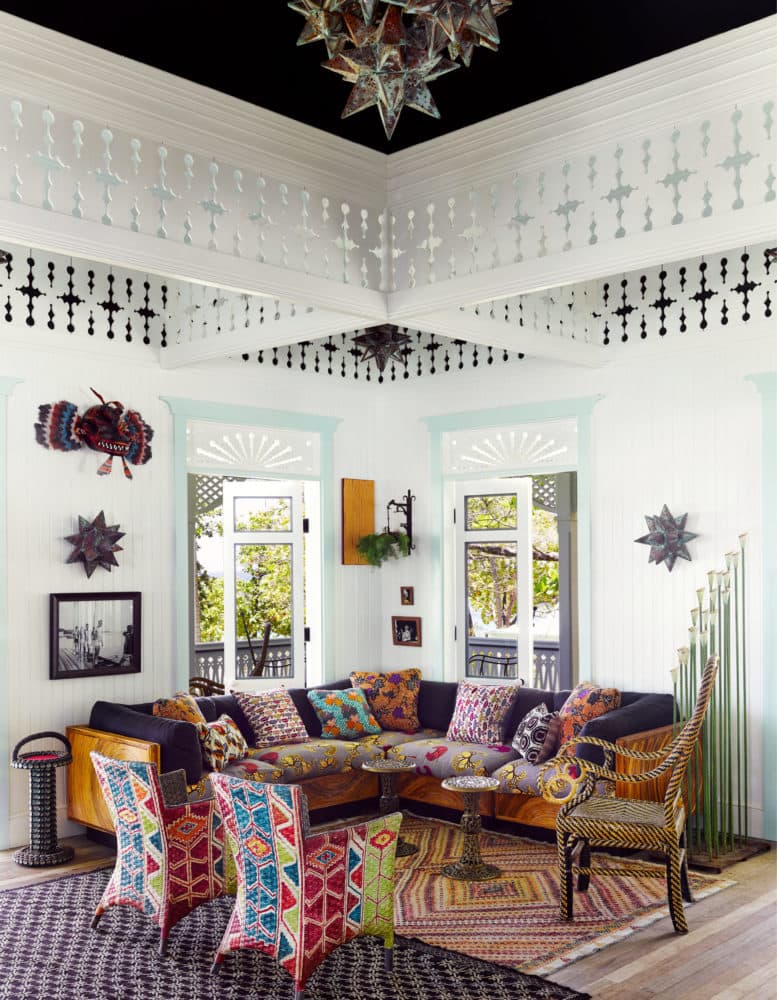In her third book, Island Whimsy, Celerie Kemble tells the tale of how the Playa Grande Beach Club went from a mere dream to a magical reality. Nestled in the verdant jungle just off the crystal blue waters of the Dominican Republic, the resort’s collection of charming bungalows reflect the New York-based designer’s playful style with elements inspired by everything from her fourth-generation Palm Beach roots to the Victoriana fretwork of a nearby town. For Kemble, Playa Grande has become her tropical haven, where sandy feet and wet bathings are as much a part of daily life as vintage D. Porthault linens and antique wicker daybeds. In an excerpt below, Kemble shares the moment she knew she was falling in love with this little slice of heaven.
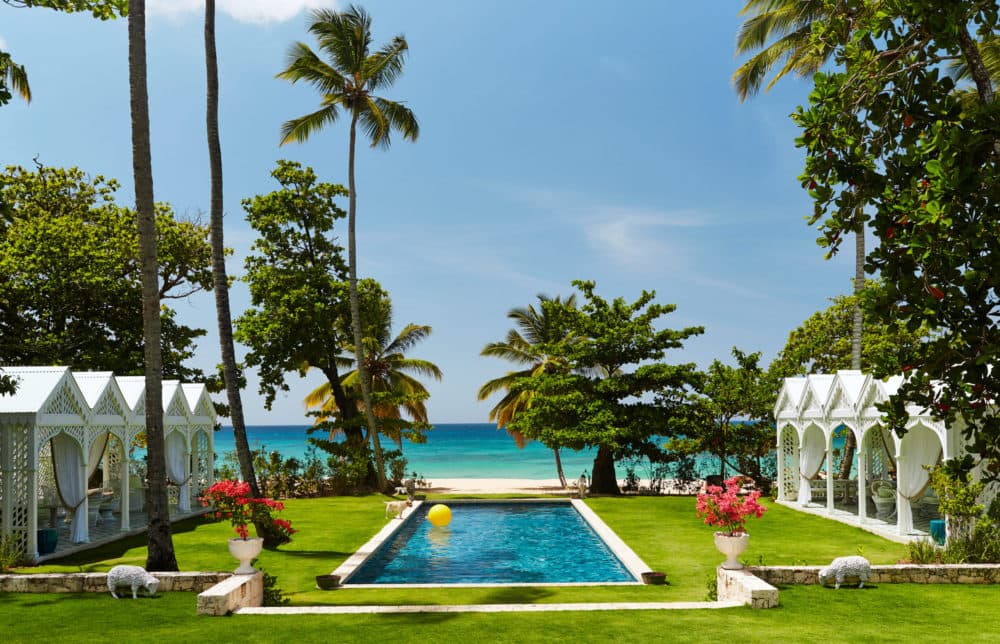
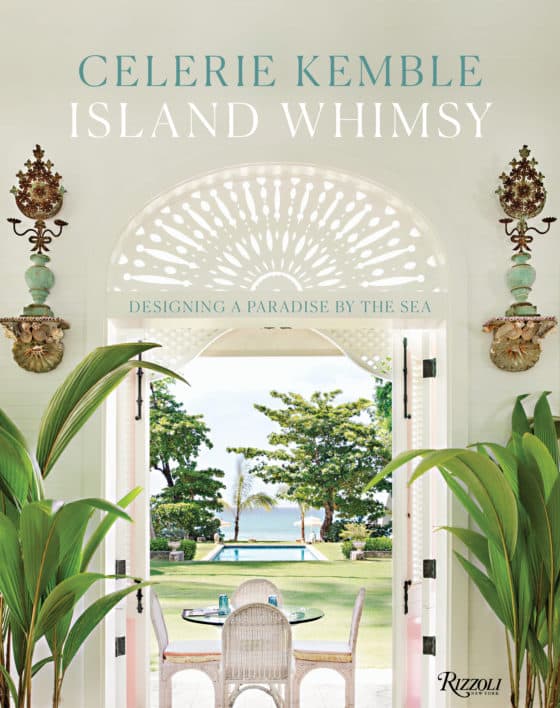
Island Whimsy by Celerie Kemble, $55. rizzoli.com
. . .
A house by the sea should be a house of dreams. Where windows and doors are thrown open to the ocean, and gusts of cool, salty air turn us all into kids again—buoyant and joyful. Free. To paraphrase Isak Dinesen, when I’m at the beach, I think: Here I am. Where I belong.
Growing up in Florida, I spent much of my childhood in a damp, sandy bathing suit, my hair crispy with salt, my back streaked with bands of sunburn from hastily applied Coppertone. I’m intimately familiar with the joy of carrying a to-go cup of white wine out to the ocean at sunset, tying the hem of my dress into a knot as my heels sink into the sand at the surf line. Over the years, I’ve been lucky enough to have my work as a designer take me to coasts from Nantucket to Naples, Malibu to the Caribbean.
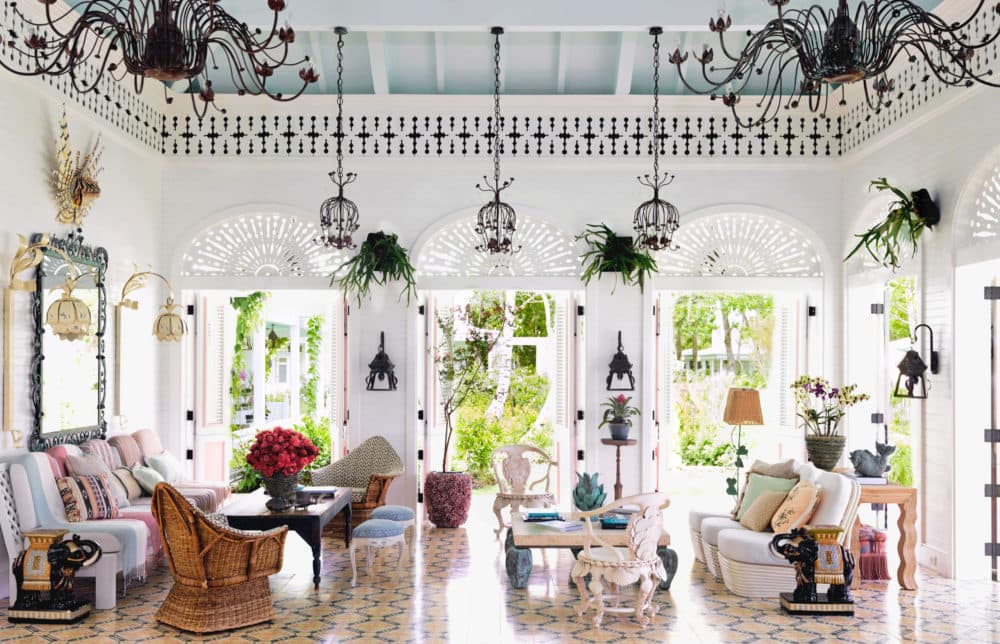
In the bahia, the thirty-foot pale aqua ceiling and Italian gessoed shell chairs from Princess Sybil of Bourbon-Parma tell you that this is a place for dreaming and appreciation. The alien octopi chandeliers and the papier-mâché lionfish Carnival mask above the mirror remind us that there is no true beauty without a few beasts!Douglas Friedman
Each of these places has its own delights, from the funky Dungeness crab shack at the Ventura County line in California to the magical pine forests of Northeast Harbor, Maine. But I’ve never responded to any beach the way I did to Playa Grande. It was like nothing I’d ever seen before: a wild swath of mountainous jungle on the Dominican Republic’s northern coast, rolling down to pastures of clear, wobbling minty-blue water, banded together by a downy crescent of golden sand that seemed to go on forever. As soon as I saw it, I thought: Oh no. I am in trouble.
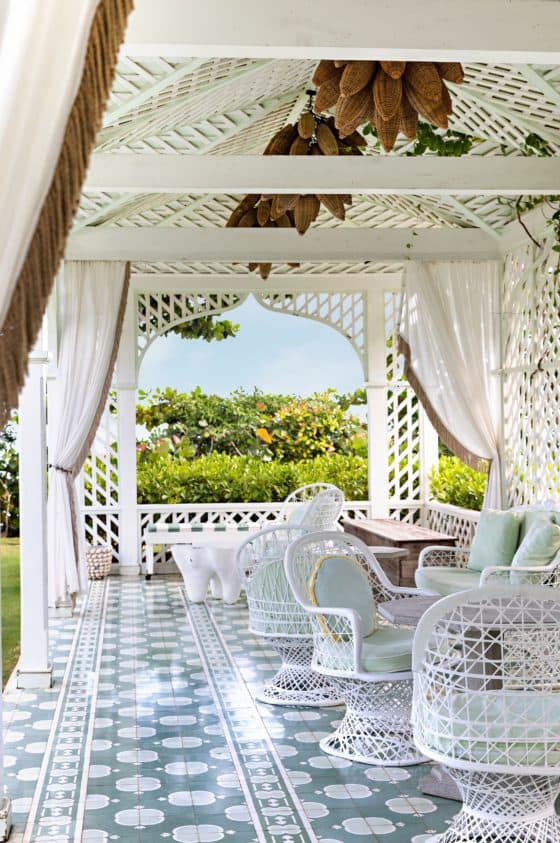
Long, trellised gazebos surround the swimming pool.Karyn Millet
It was the summer of 2004, and my fiancé and I had flown down to the DR at the behest of my beloved Dominican friend Delio Gonzales. Delio knew Playa Grande (which was for sale) and insisted we see it. He had long been familiar with our dream of building a group of vacation homes with friends and family. The fantasy was that it would be somewhere beautiful and wild but not too remote. A place where we could build a cluster of houses centered around a shared clubhouse, which would perhaps turn into a boutique hotel when the homes weren’t in use.
It’s not right to say that Playa Grande was a “virgin” beach, or that it was “untouched.” The place is cherished by locals and has a history going back centuries to the Taino Indians who lived on the beach’s sheltered sands. As we walked, kids jumped around in the shallows and surfers unzipped the turquoise waves down at the far end of the beach; families picnicked under umbrellas. Fishermen walked along the beach with trays, selling red snapper and octopus and oysters fresh out of the ocean, their dazzling colors displayed on ice.
I’d never built in the Caribbean before, spoke only fifth-grade Spanish (and remembered that report card column filled with C’s), and struggled with the enormity and responsibility of changing this deeply precious place. I thought: Is there a way to thread this needle correctly? To build something that is both humble and inspiring? A place that doesn’t take away from the sense of expansiveness and wonder and gratitude that this beach evokes but bows down before it? Something that, instead of imposing upon what already exists, feels almost evolved from it?
I grew up in a pretty magical place—one that has been carefully built and curated by four generations of my family. My great-great-grandparents were some of the first settlers on the island of Palm Beach back in the late 1800s, when it was still swamp and sawgrass. I spent my childhood on a rambling property with a bunch of old family houses, surrounded by acres of jungle overlooking the part of the Intracoastal known as Lake Worth. We lived in a deconsecrated church—a beautiful but gangly wood-shingled Gothic building with an octagonal clock tower and multiple shingled porches decked out in floral chintz and wicker, open to the lake on one side and the jungle on the other.
Kemble mimicked falling almond leaves with with fanciful Mexican pom-poms to create “a dreamy tangle” over a pair of beds in a kids’ room; “beautifully decrepit metal flowers on the bedside table bear further witness to the passage of time.”Karyn Millet
A kaleidoscopic corner of Playa Grande’s library—or the Star Bar, as Kemble calls it, on account of the pierced copper star lanterns that allude to the night sky.Douglas Friedman
We were a family defined by sand on the kitchen floor and in the creases of our car seats. There was always bougainvillea crawling in the windows. Always a cheese weeping on the kitchen counter. People dropped by in wet bathing suits, fresh from the beach, and stayed for sunset cocktails. At night, I fell asleep to the sound of bamboo creaking outside my windows, frogs singing in the trees.
But our house was a place of elegance and comfort too. The silver was never polished, but there was a many- generations-deep collection of it. The floors had been hand-painted by my mother and father. The pink-and-green tiles imported from Portugal. The sheets pressed and fragrant.
When I began to imagine building homes at Playa Grande, I envisioned a similar kind of enchantment: a wild, romantic place that was also modest in scale and appropriate to the location. I hoped my family and I might gently weave ourselves into the vibrant community that was already there, summoning the spirit of my childhood home through the lens of the Caribbean landscape and the Dominican culture.

The swimming pool is the heart of Playa Grande. Dominican architect Sarah Garcia drew the fantastical vaulted lattice cabanas that, with their lightness and whimsy, tell visitors that playfulness is exalted.Douglas Friedman















